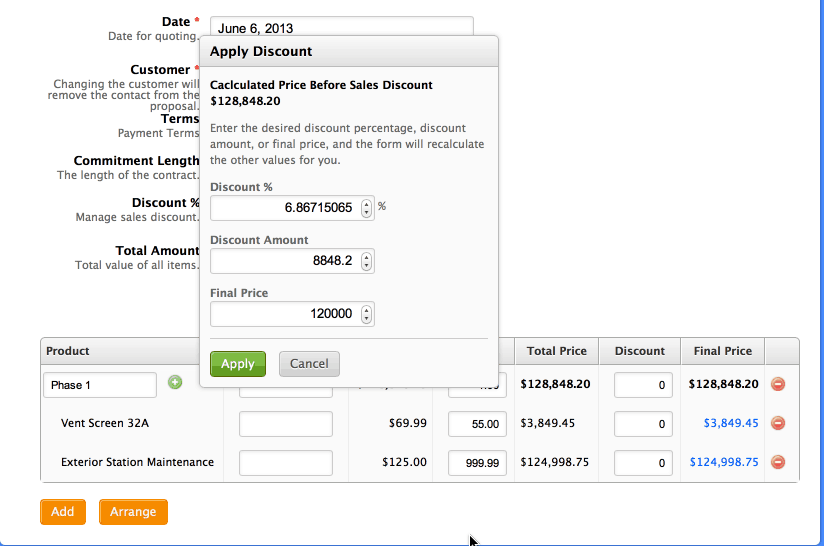I recently wrote about how not to discount. Some people have naturally asked how they should handle discounting situations.
1. Follow the advice in the “how not to discount” post– never preemptively discount.
Note that Mimiran helps with some of the anxiety because you know if and when your prospect has read your proposal. After all, if they haven’t even read the proposal, they can’t object to the price yet, right? You can also see if they keep revisiting the proposal section that deals with prices and fees.
2. Understand the real issue
Never guess. You’re likely to give away profit without adequately addressing the prospect’s concerns. If the prospect raises a price concern, you need to understand the real issue. I ask something simple and non-judgemental, like “what were you thinking?” Then, the prospect usually lays out a way to address their concerns. For example:
- What if we just start with 10 users?
- Implementation is more than I was thinking. I think we can provide more support than you suggest in your proposal. If we do the data cleansing, how does that change the price and the timeline?
- I only have $50,000 in my budget.
- That’s way too expensive.
Notice that in the first 2 scenarios, the prospect is proactively working with you to help create a mutually beneficial solution. They are indicating that they don’t think the price is wrong or unfair, just that it won’t work for them. And they are trying to suggest ways to come to a good resolution. They are not asking for a discount. Listen and you can close the deal without giving away the house.
In the latter 2 scenarios, the prospect is complaining about the price. But we need to understand if that’s the real issue. So we can ask something like “if this could fit in your budget, are you ready to sign now?” If they say “yes”, we know we have a pricing issue. If they say “well, that would help, but then I need to get Alice from IT and Bob from legal to sign off…”, you know you have other issues beyond price, which is a topic for another post.
3. Handle True Price Objections with Exchanges of Value
Let’s assume that it’s only a price objection, and that you can close the deal immediately by meeting the price target. Now let’s also suppose that we can’t “value sell” our way out of this (also the subject for another post). So you actually need to lower the price. But we don’t want to simply say “OK, let me discount my totally fair and reasonable price.” This not only lowers profit, it also lowers the perceived value of your offering(s) and the professionalism of your firm.
So you want to exchange value.
Mimiran offers a some easy and useful ways to do this:
- Payment terms discount. If the buyer pays upfront, or within 15 days, or on some other accelerated schedule, they get a discount.
- Explicit discount line items. For example, you can add an item like “Testimonial Discount” with a price of -$1,000. This makes it explicit that you are rewarding them for the value of their time and endorsement. I don’t like implying that the testimonial is paid, but the reference (and the quality of the testimonial) will reflect the buyer’s perception of value, and some kind of discount is often the only way for your buyer to get approval on their side to do a public endorsement.
- You can also manually discount the existing items on the quote, at the quote, group, or individual item level. If you do this, make sure you add some language to the proposal describing why the buyer is getting a better deal (they are handling more of the prep work, they are never going to call you after 5pm, etc).
Now you can meet your customer’s needs while still meeting your own.


